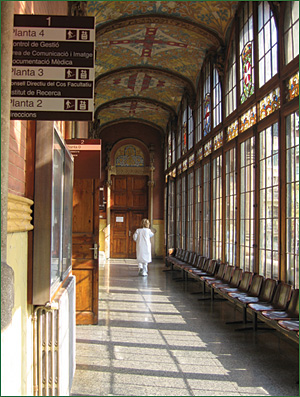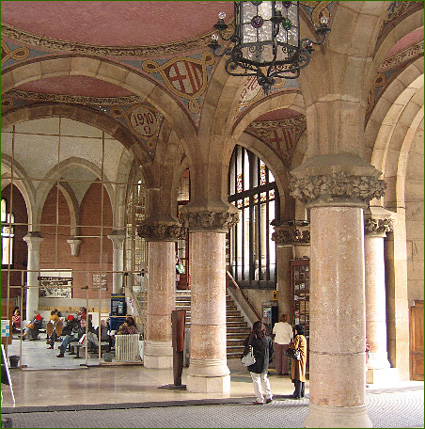Editor’s Notebook: Travel Notes
May / June 2007
Editor’s Notebook
Travel Notes
 I am halfway through a 1-month stay in Barcelona, Spain (pinch me). I came for the World Congress meeting at the end of March and will stay through the BMJ/IHI International Forum in late April, followed immediately by a half-day workshop sponsored by the European Society for Quality Healthcare. I’m settled in a cozy apartment with high-speed Internet and have continued to work on this issue of PSQH. I’ve also enjoyed exploring this beautiful city and appreciate the patience of local merchants, who generally tolerate my lack of Spanish and limited proficiency with charades.
I am halfway through a 1-month stay in Barcelona, Spain (pinch me). I came for the World Congress meeting at the end of March and will stay through the BMJ/IHI International Forum in late April, followed immediately by a half-day workshop sponsored by the European Society for Quality Healthcare. I’m settled in a cozy apartment with high-speed Internet and have continued to work on this issue of PSQH. I’ve also enjoyed exploring this beautiful city and appreciate the patience of local merchants, who generally tolerate my lack of Spanish and limited proficiency with charades.
The first day following the World Congress conference, I took a short walk to the Sagrada Familia, Antonio Gaudi’s masterpiece in progress — intriguing, fantastic, but jammed with tourists — and continued a few blocks further to the Hospital de la Santa Creu i Sant Pau (www.santpau.es).
At some point, I will write about my conference experiences, but for the moment I want to share a little of what I learned about Sant Pau. I knew the hospital is an architectural treasure and a UNESCO World Heritage site, but I didn’t realize that it is a functioning city hospital: 634 beds, 34,000 admissions, and 150,000 emergency visits per year. Although clinical departments are gradually moving to new buildings on campus, the old campus is busy with clinicians, patients, and family members sharing sidewalks, benches, and gardens with tourists and architecture aficionados.
The photograph below shows the main portico, which includes a waiting room for friends and family who have accompanied people needing care at the emergency room. It wouldn’t be right to romanticize the circumstance of spending anxious time waiting in what may be an uncomfortable, outdated space, no doubt added in recent times. However, as through much of Europe, I can’t help but be impressed with the richness of history, the beauty of the old buildings, and in this case with the priorities of the architect.

Lluis Domenech i Montaner (1850-1923) designed Sant Pau at the turn of the century, with construction on the first of 18 pavilions beginning in 1902. Montaner was a gifted and accomplished architect of Catalan Modernisme, served as a member of the Spanish parliament, and directed the School of Architecture in Barcelona.
Sant Pau is the most recent manifestation of the second oldest hospital in Europe, with operations dating back to 1401. Montaner designed Sant Pau to provide an environment that would limit the risk of infection and promote rapid healing. He oriented the buildings toward the sun to maximize the use of natural ventilation and light. At Sant Pau, as throughout Barcelona, windows are plentiful, often stretching nearly from floor to a very high ceiling, and covered with louvered shutters inside and out — no doubt to attempt to control the heat of summer in Barcelona. Underground passageways provide rapid transport of patients and staff, while separate pavilions limit the spread of infection.
Gardens were an important part of Montaner’s design, with aromatic and medicinal plants contributing to the healing environment. I visited Sant Pau on a sunny spring afternoon, and the perfume of orange trees in bloom was a pleasant distraction.
I’m sure that everyone is grateful for the new buildings on campus, but I like to think that the healthcare experience is enhanced by the ongoing use — increasingly for administration and cultural functions such as housing important archives — of Montaner’s carefully designed, yet fanciful, buildings.
